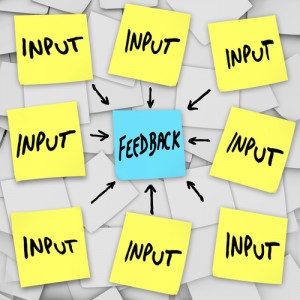4 Tips To Improve B2B Lead Quality
One of the most common goals for a B2B website is lead generation. Yet B2B marketers consistently identify lead quality as their #1 challenge. Here are four proven techniques to improve the quality of your search-generated leads. Understand Inquiries vs Leads First, track and evaluate raw inquiries and accepted leads. Raw inquiries include every contact […]
One of the most common goals for a B2B website is lead generation. Yet B2B marketers consistently identify lead quality as their #1 challenge. Here are four proven techniques to improve the quality of your search-generated leads.
Understand Inquiries vs Leads
First, track and evaluate raw inquiries and accepted leads.
- Raw inquiries include every contact record generated by your marketing program
- Accepted leads are a subset of these inquires and are typically those that contain legitimate and desirable contact information.
For example, before loading all inquiries into a lead tracking system, many companies eliminate records with bogus email addresses and/or phone numbers, or inquiries associated with competitors, current customers, students or consultants (not their target audience). Also, some marketers eliminate inquiries located outside their service area.
B2B marketers should analyze the cost associated with both raw inquiries and accepted leads (i.e. only those inquiries that are loaded into your lead system and warrant follow-up activity).
Across the multiple programs we manage for various B2B firms it is not uncommon to see a lead acceptance rate of only 50% — especially for firms selling to very specific, niche markets.
In a situation like this, understanding the inquiry-to-accepted lead ratio is critically. The cost-per-inquiry (or cost-per-conversion) reported by your PPC campaign or by Google Analytics is really not reflective of your cost-per-lead.
In fact, with a 50% acceptance rate, your true cost-per-lead is double the reported cost-per-conversion.
Implement A Lead Grading System
Second, implement a lead grading system. One of the most common techniques is a simple A, B, C, D format. B2B marketing and sales teams must jointly determine an acceptable grading system.
For example:
- A leads represent inquiries with the highest possible sales potential. This might include large companies, with significant purchasing power, in your specific target market and desired geographic area.
- B leads might come from slightly smaller firms, but still in your market.
- C leads could be associated with companies that have potential, but are not directly in your target market.
- D leads warrant some follow-up but are not viewed as high-potential.
Create A Marketing-Sales Feedback Loop

B2B marketers can’t wait until a sale is complete to assess lead quality because the data will be so old it can’t be used to actively manage a real-time program like search.
In our experience, it is extremely beneficial to have direct feedback from your sales team. This allows marketers to understand which leads are qualified and moving through the sales pipeline.
On at least a monthly basis, lead grades should be reviewed and updated by the sales team and shared with marketing – completing the lead quality feedback loop.
Marketers are often surprised to learn that the campaigns and keywords that generate a high volume of inquiries and leads are not the same words that consistently generate high-quality leads.
Identify Marketing vs. Sales Leads
In addition to lead grading, another technique used to improve lead quality is to identify marketing leads vs sales leads.
- Marketing leads typically need to be cultivated over time until they are ready to interact with a sales-person. These prospects might ultimately be highly qualified, but are typically early in the buying cycle and require additional information and resources.
- Sales leads are usually prospects who are further along in the buying process, closer to making a purchase decision. In terms of needs, budget and project timeline these leads are definitely ready to interact with a salesperson.
By identifying and categorizing leads this way, marketers are able to treat prospects appropriately as they move through the buying process. This also allows your sales team to focus their valuable time, attention and resources on the right prospects.
Evaluate Quality At A Granular Level
B2B marketers must evaluate not just the quantity of inquiries generated, but also (and perhaps more importantly) the quality of the resulting leads – based on sales results and ROI. This analysis should occur at a granular level; by campaign, ad group and keyword.
Only then can search marketers appropriately manage each keyword — based on that word’s ability to generate inquiries, accepted registrations, qualified (graded) prospects, sales-ready-leads, and ultimately – customers, revenue and profit!
Stock image from Shutterstock, used under license.
Opinions expressed in this article are those of the guest author and not necessarily Search Engine Land. Staff authors are listed here.
Related stories
New on Search Engine Land